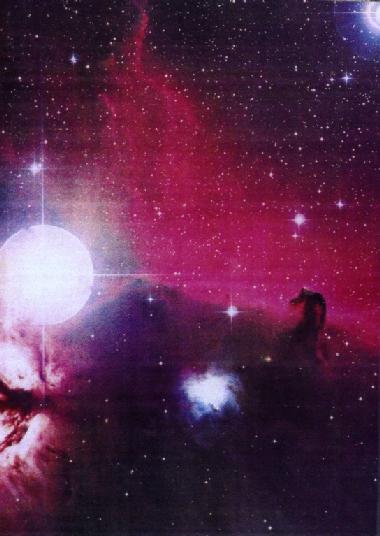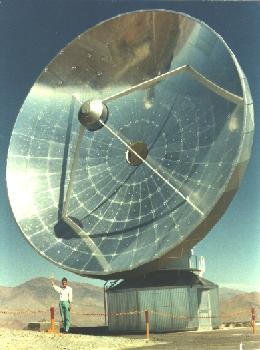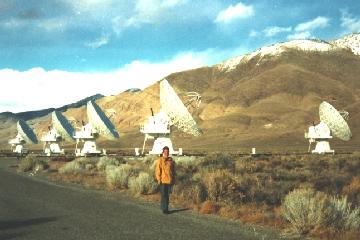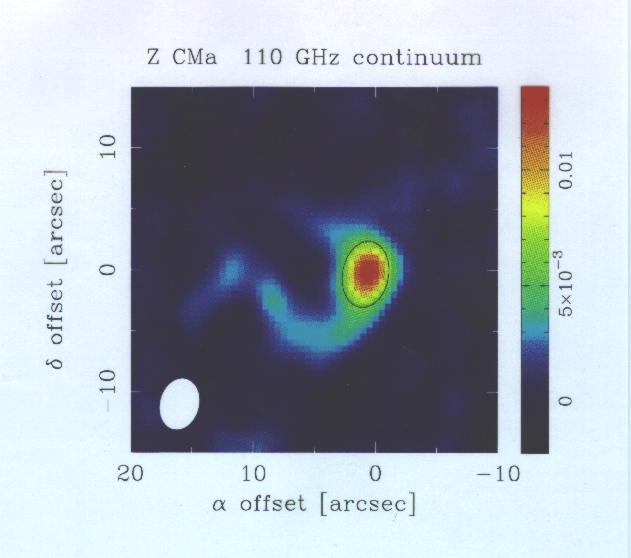|
STAR FORMATION
Theoretical models of the formation of low-mass stars predict two important evolutionary stages: (1) the formation of an unstable quasi-equilibrium cloud core through the slow leakage of the magnetic cloud support by ambipolar diffusion, and (2) the formation of a central protostar and disk through a dynamical "inside-out" collapse (Shu 1977). This inside-out collapse propagates outward as an expansion wave at the sound speed. Outside the radius of the expansion wave the cloud is static; inside this radius the flow quickly approaches free-fall velocities. An ordered magnetic field can alter the spherical infall in the inside-out collapse. Galli & Shu (1993) have shown, that in presence of a reasonable field strength, the bulk of the infalling gas is deflected by the Lorentz force to a large (several hundred to a few thousand AU long) flattened "disk" structure oriented perpendicularly to the mean magnetic field direction. This flattened structure is called "pseudodisk", because it is not rotationally supported. The pseudodisk material falls radially toward the central star until it hits the rotationally bound circumstellar disk. The accretion shock, which is formed when the free-falling gas merges with the circumstallar disk, produces strong infrared emission (e.g., in the rotational lines of water and the vibrational lines of CO. If the circumstellar disk becomes roughly as massive as the central star, further growth of the disk is predicted to be limited by the onset of non-axisymmetric gravitational instabilities, which produce bars or spiral waves (e.g., Shu et al. 1990). In order to observationally test these theoretical ideas, envisioned for the low-mass star formation process, we have observed the protobinary Z Canis Majoris (Z CMa) both with single-dish telescopes (SEST and the Nordic Optical Telescope) and with Caltech's millimeter-wave interferometer (at Owens Valley Radio Observatory, OVRO).
Near-infrared spectroscopic observations of Z CMa (with the Nordic
Optical Telescope) revealed besides the vibrationally excited
first-overtone CO band heads, also line wings of the
vibration-rotation bands of water vapor, which imply a temperature
around 2000 K and a density on the order of 10^12 cm^(-3). The likely
cause of these near-infrared water-band wings (seen in the 2.2
micrometer region) is the strong heating produced by the mass
accretion through the inner disk onto the star.
More about this single-dish study of Z CMa can be found in Liljeström
& Olofsson (1997, ApJ, 478, 381-394).
The OVRO interferometer has been used to study the small-scale
structure around Z CMa. Three different configurations of six 10.4 m
radio telescopes yielded a spatial resolution of 2.9" x 2.5" in the
110 GHz continuum data and a 3.6" x 2.9" resolution in the molecular
line data (13CO and C18O).
More about the interferometric study of Z CMa will be found in
Liljeström & Bergman (in preparation).
|


 This interferometric data revealed a resolved dust disk around Z CMa
(radius 2500 AU; mass 1.5 solar masses), thus supporting the pseudodisk
predictions of Galli & Shu (1993). Such a massive disk is expected to
excite non-axisymmetric gravitational instabilities, which transport
disk material inward and angular momentum outward, manifested as
trailing spiral features.
Very satisfactorily, this is verified with our OVRO data. This
supports the view that gravitational instabilities drive disk
accretion by first building up the mass in the disk and then dump
it sporadically onto the protostar naturally explaining the luminous,
FU Orionis type outbursts, which interrupt the much longer
low-luminosity time periods of this protostellar object.
This interferometric data revealed a resolved dust disk around Z CMa
(radius 2500 AU; mass 1.5 solar masses), thus supporting the pseudodisk
predictions of Galli & Shu (1993). Such a massive disk is expected to
excite non-axisymmetric gravitational instabilities, which transport
disk material inward and angular momentum outward, manifested as
trailing spiral features.
Very satisfactorily, this is verified with our OVRO data. This
supports the view that gravitational instabilities drive disk
accretion by first building up the mass in the disk and then dump
it sporadically onto the protostar naturally explaining the luminous,
FU Orionis type outbursts, which interrupt the much longer
low-luminosity time periods of this protostellar object.
